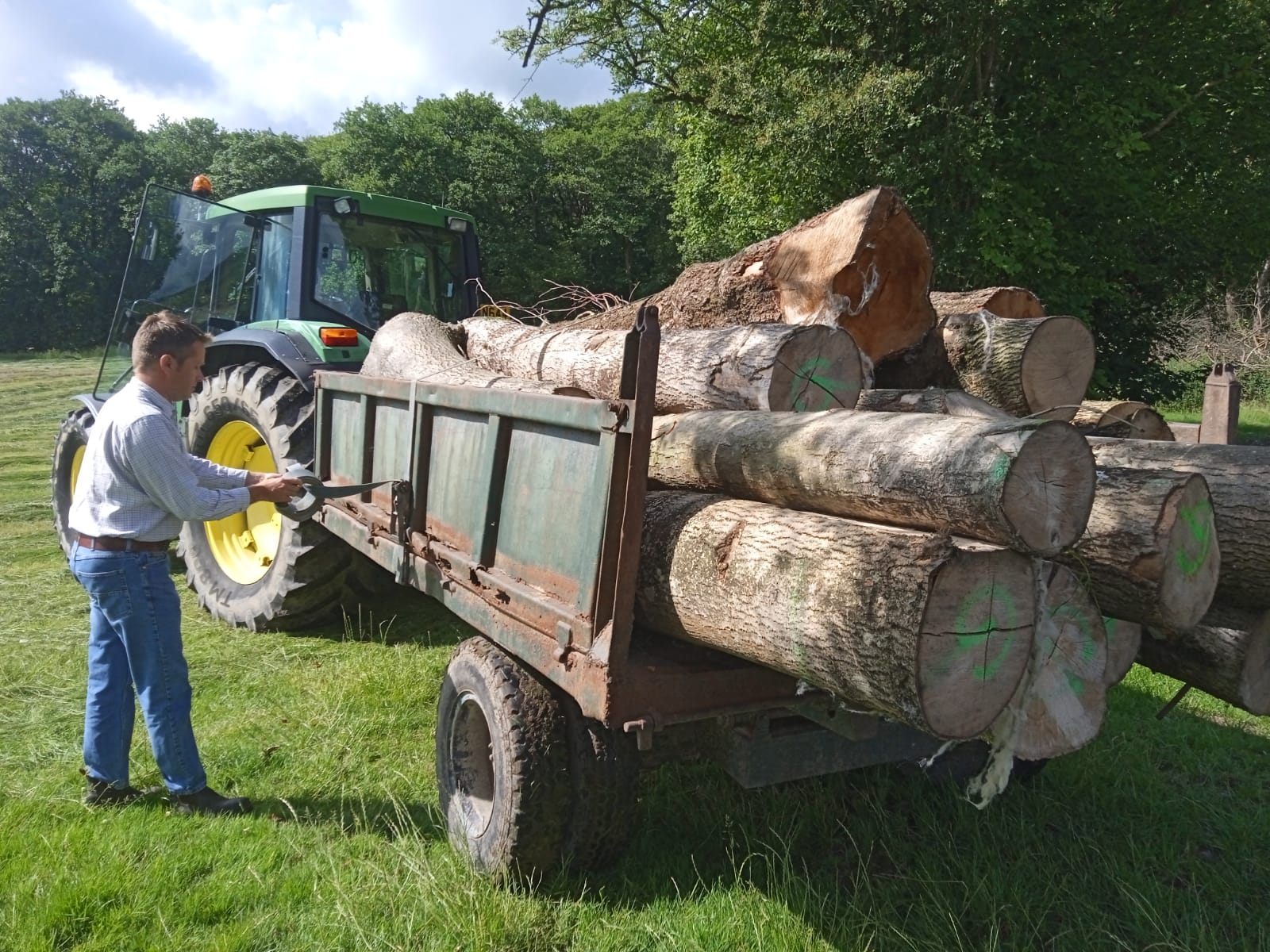Today, we’re starting with the hedge that began it all, and a visit to nearby Fronwen Farm.
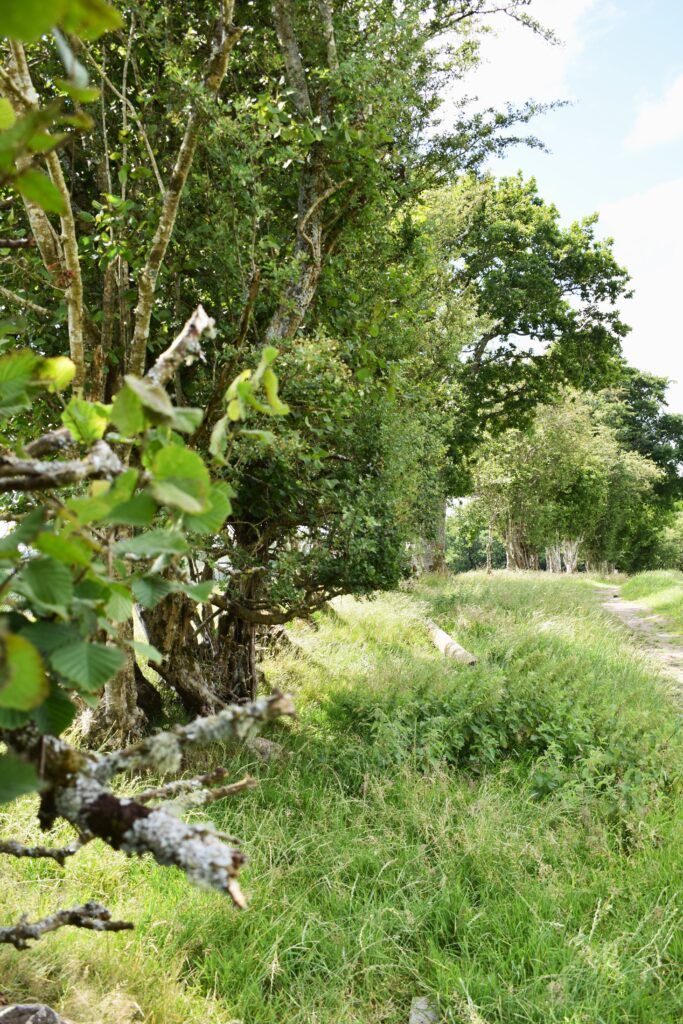
Hedges can play a vital role in any managed landscape, whether it’s a garden, farm or estate. They mark boundaries, provide windbreaks for crops and shelter for animals, and are home to a huge range of wildlife.
In some cases a hedge can last centuries, but time and the elements will always take their toll, so what happens when a hedge needs re-planting? On a warm and cloudy Friday, Elen and I headed off to meet farmer Tudor Griffiths and find out.
Bouncing along in a trailer is a great way to travel. Hanging over the sides with the wind in our faces and the hills all around us we had a sheep-dog’s view of the world as Tudor quad-biked us up to the Big Field on Fronwen Farm to see the stretch of hedgerow he’s recently had re-fenced and replanted.
Looking at it, the first thing that strikes you are the regenerating stumps and remaining trees rising proudly out of the line of the old hedge.
“We leave some of the mother trees,” Tudor explained. “They’re good for wildlife and they anchor the soil; the rest had to go because the gaps between them had grown so big they weren’t providing any cover.”
Ideally, a good hedge should be broad at its base and tall enough to act as decent barrier. Maintaining broad and dense cover involves training the trees to grow sideways rather than up, and where this isn’t possible, the trees will revert and start reaching for the sky. With fewer branches lower down to interweave, gaps start to appear and it becomes necessary to fell and re-plant.
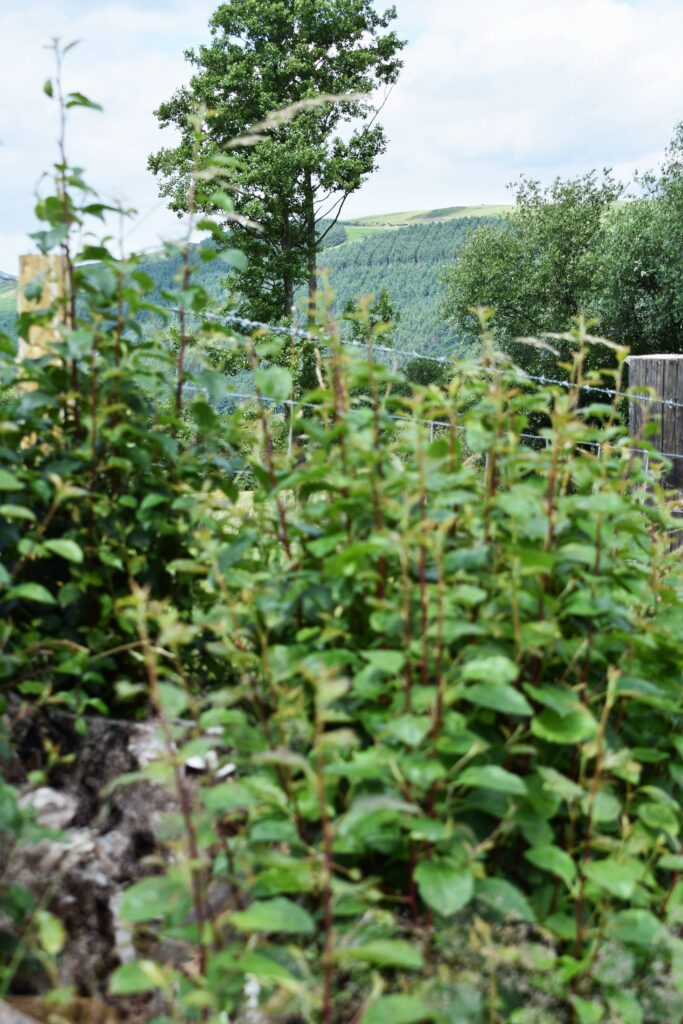
So where to begin? With the rise in prices of everything from feed to fertiliser, many things in farming these days have to start with a grant, and hedges are no exception.
“The grant came from Glastir,” Tudor said, “and Coed Cymru helped with all the paperwork. You have to have a felling licence, too, so we applied in October and it came through in February. We had to get everything felled and replanted by the end of March, so it was tight, but we managed it.”
Hedge planting is a team effort. In addition to people such as Gareth Davies from Coed Cymru advising on the initial applications, local tree surgeon Carwyn Lloyd worked on felling the trees and planting the new saplings, while Dylan Owen transported the timber.
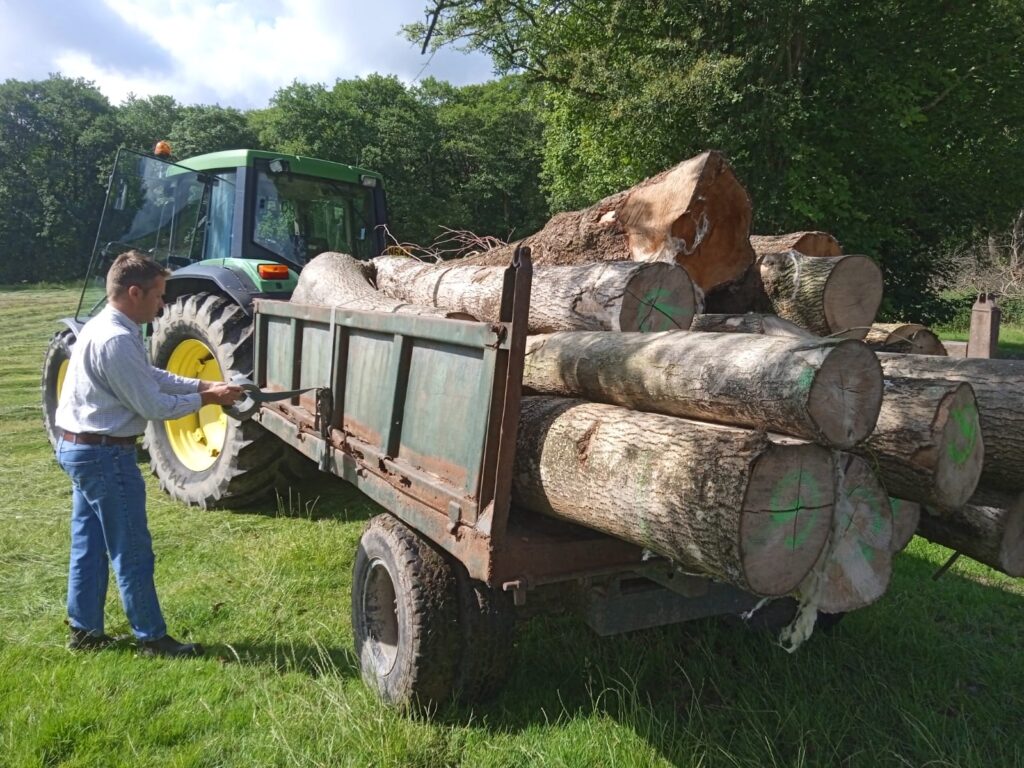
“Yn oes fy nhad a fy nhaid, byddai’r cyfan wedi cael ei wneud efo llaw,” dywedodd Tudor wrthon ni, ac mae edrych nôl ar ddeunydd archif yn dangos fod sawl techneg ac arddull yn amrywio yn ôl lleoli’r canghennau, y pellter rhwng y polion, a prun ai byddai rhwymo yn cael ei ddefnyddio. Daeth y gwahaniaethau yn sgil patrymau tywydd lleol, y deunyddiau ar gael ac, wrth gwrs, cymeriad unigryw’r gweithwyr. Mae’r llun isod, er enghraifft, yn dangos rhywun yn plethu perth mewn arddull “stake and pleach” o Bontsenni a Chrai, 1972-1973.
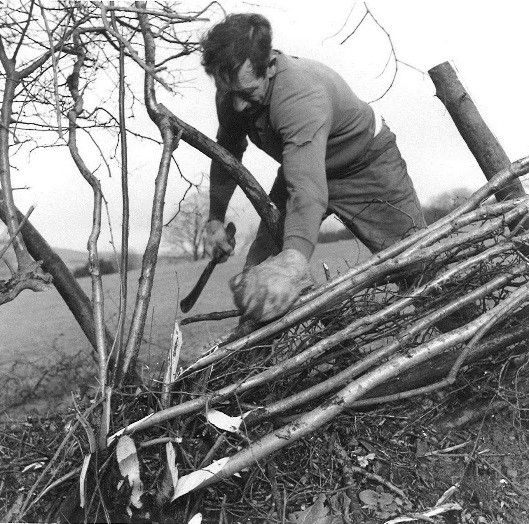
For the new hedge at Fronwen, Carwyn planted about a thousand new saplings in total, chosen to echo what had been there before – primarily a mixture of hazel, blackthorn and birch.
The result is a sturdy, double-fenced, three metre-wide belt of flourishing stumps and saplings that winds downhill towards the river. Why three metres? “Sheep,” says Tudor. “Or cattle. Any less and they’ll stick their heads over and try to eat what’s just been planted.”
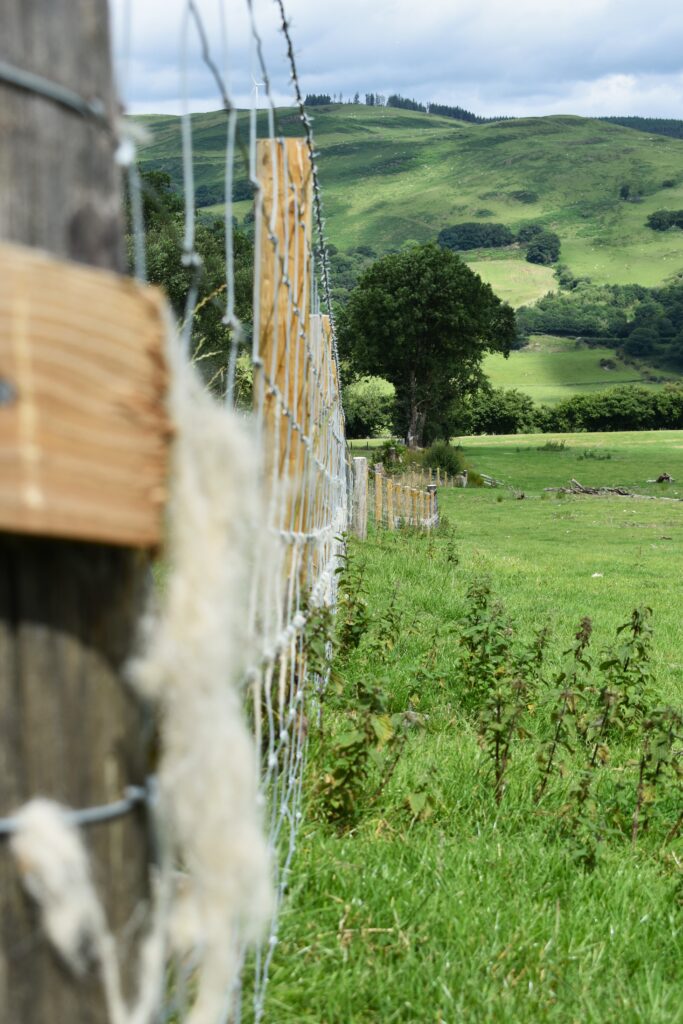
In about five years’ time the saplings will be well established and the hedge will once more be growing back thick and bushy, offering shelter for ewes come lambing season and ideally providing habitat to some of the many small mammals, insects, butterflies and nesting birds that can call hedges home.
With the new hedge getting growing, what happens to the timber that was felled? The uses are manifold, depending on the type of wood, its age and condition. The possibilities increase significantly, however, when there are the people with the skills, tools and space to process what’s available, and this is where Tymhorau Dyfi’s wood-working team comes in. Dylan, Theo and Brennig pool their knowledge and expertise to make a range of items including gates and furniture. How do they get from seasoned trunks to a bespoke wooden chair, for example? Follow our forthcoming articles to find out.
Ellie Jones
